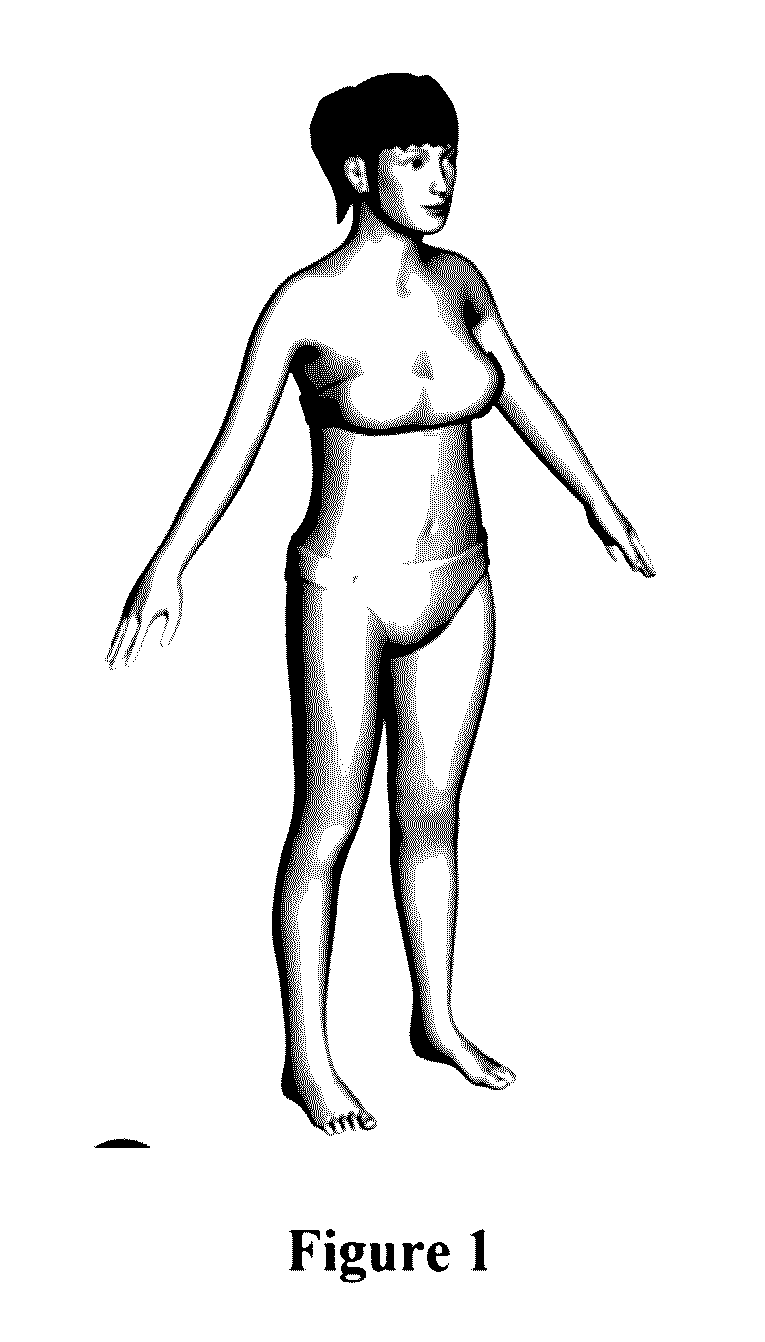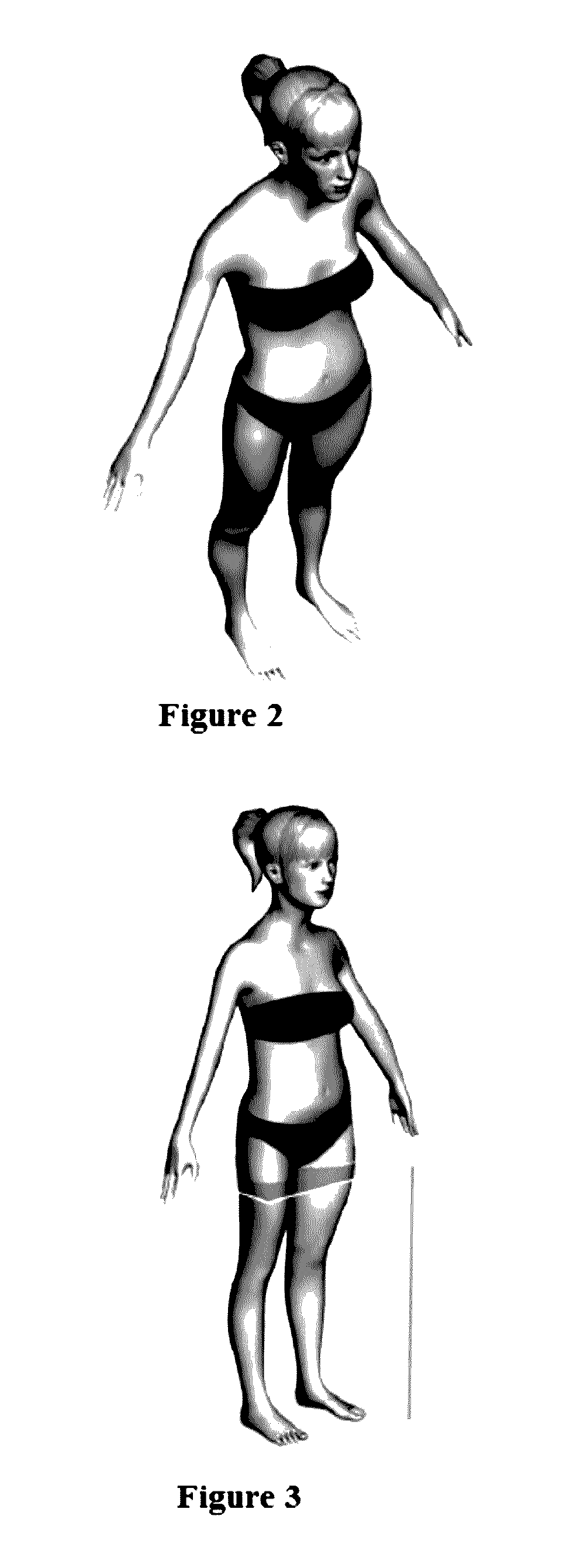Mobile device human body scanning and 3D model creation and analysis
- Summary
- Abstract
- Description
- Claims
- Application Information
AI Technical Summary
Benefits of technology
Problems solved by technology
Method used
Image
Examples
Embodiment Construction
[0042]The invention comprises a method which uses a single 2D camera, for example, a mobile device's camera, to take multiple (i.e., two or more) 2D pictures and make a 3D body model. The method requires 2 images of a body, from which the method creates a 3D model, and without requiring a depth measurement. The camera is ideally built-in to the mobile device. In one embodiment the camera is external to the mobile device and connected via a wired or wireless connection. The mobile device is ideally a smartphone, PDA, tablet, or other small mobile device, but it could also be a laptop, desktop computer, or other device equipped with a camera. For higher accuracy of the 3D reconstruction, invention may further comprise using a built-in accelerometer providing angles for camera positioning. In some embodiments, the method comprises taking three or more 2D pictures to form a 3D body model.
[0043]During initial 2D image capture, the subject is positioned in two poses (manners) in front of ...
PUM
 Login to View More
Login to View More Abstract
Description
Claims
Application Information
 Login to View More
Login to View More - R&D
- Intellectual Property
- Life Sciences
- Materials
- Tech Scout
- Unparalleled Data Quality
- Higher Quality Content
- 60% Fewer Hallucinations
Browse by: Latest US Patents, China's latest patents, Technical Efficacy Thesaurus, Application Domain, Technology Topic, Popular Technical Reports.
© 2025 PatSnap. All rights reserved.Legal|Privacy policy|Modern Slavery Act Transparency Statement|Sitemap|About US| Contact US: help@patsnap.com



